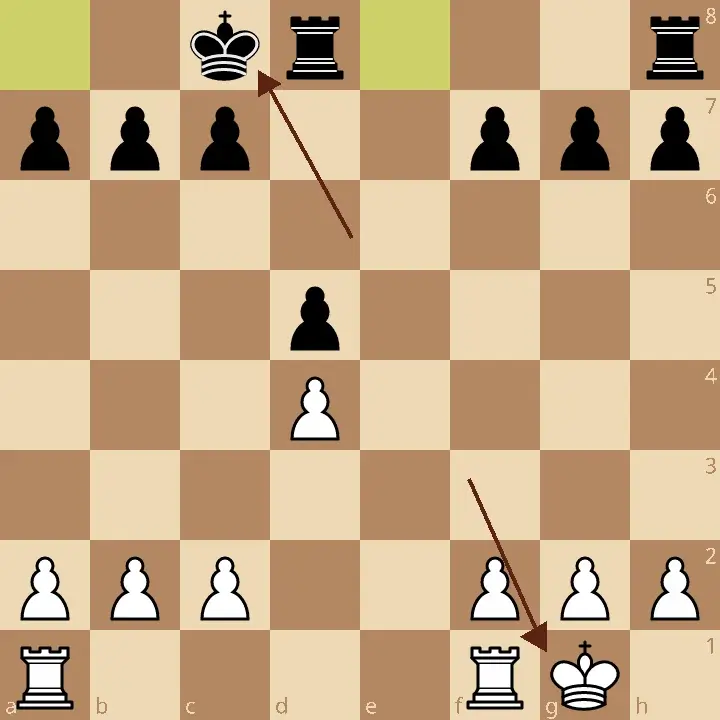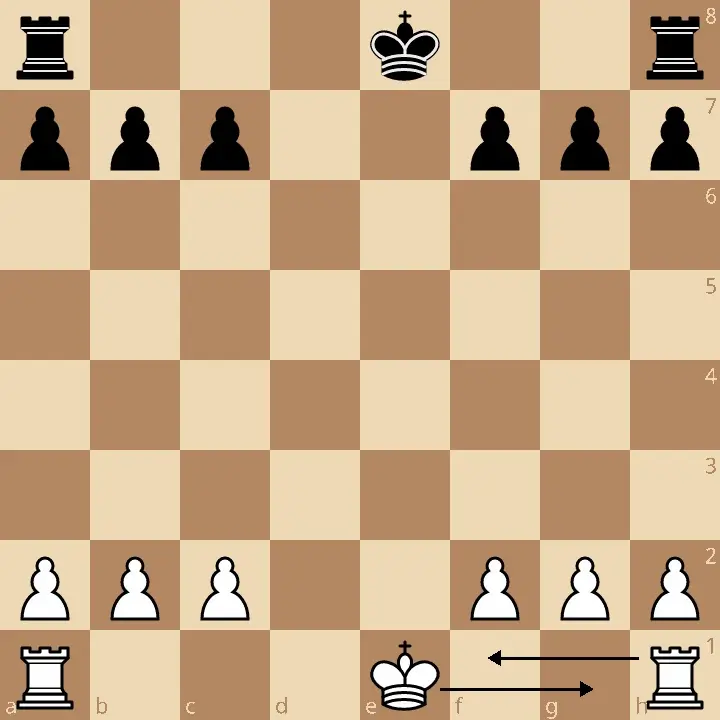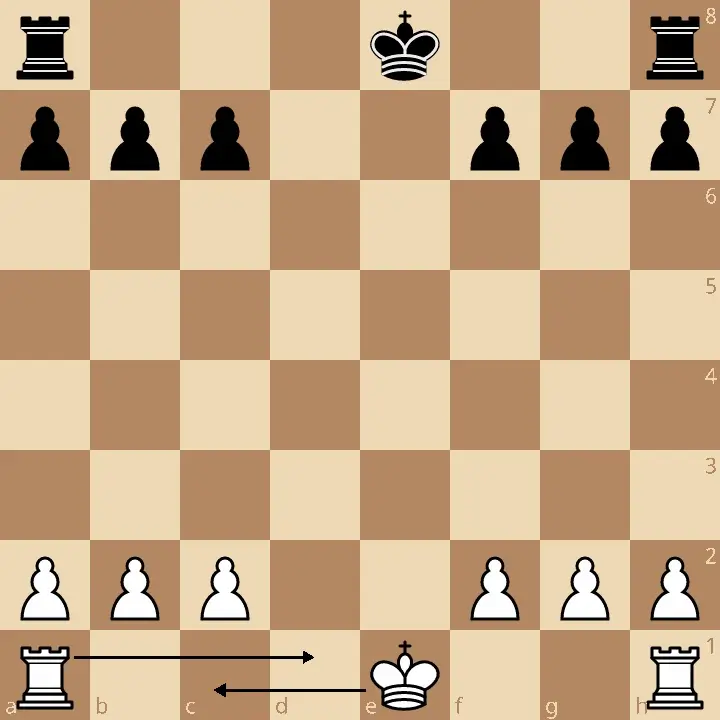Introduction
In chess, there’s one move that breaks the usual “one piece at a time” rule – castling. It’s a rare and powerful maneuver that lets you move both your king and a rook in a single turn. More than just a quirky exception, castling serves two vital purposes: it tucks your king away from danger and unleashes your rook into a more active role. Mastering when and how to castle can be the difference between a shaky opening and a solid, well-defended position.

What is Castling?
Castling is the only move in chess where two pieces move simultaneously: the king and one of the rooks. In a single motion, the king slides two squares toward the rook, and the rook hops over to the square right next to the king.
There are two types of castling:
- Kingside castling – The king moves toward the rook on the h-file, ending up closer to the board’s edge. This is usually faster and safer because fewer pieces block the way.
- Queenside castling – The king moves toward the rook on the a-file, ending up more toward the center. It takes longer to prepare but places the rook on a more central file.
Both options follow the same rules, but each carries its own strategic flavor – knowing when to choose one over the other is a skill every chess player should develop.
How to Castle
Castling looks simple, but it’s important to follow the exact sequence of moves. Here’s how it works with white as the example:
Kingside Castling (O-O)
- Move your king two squares to the right, from e1 to g1.
- Move your rook from h1 to f1, jumping over the king.

This is the faster and more common option since only the knight and bishop need to be moved out of the way.
Queenside Castling (O-O-O)
- Move your king two squares to the left, from e1 to c1.
- Move your rook from a1 to d1, hopping over the king.

This takes longer to prepare because the queen, bishop, and knight on the queenside must be moved first, but it often puts your rook in a more central and active spot.
Conditions for Castling
Castling is only allowed if all of these conditions are met:
- Neither the king nor the rook involved has moved at any point in the game.
- No pieces are between the king and the rook – the path must be clear.
- The king is not in check when attempting to castle.
- The king cannot pass through a square under attack on its way to castling.
- The king cannot end up in check after castling.
Important Note:
The rook may pass over or be on a square that is attacked – only the king’s safety is restricted in this way.
Strategic Importance of Castling
Castling is more than just a quirky chess move – it’s a strategic cornerstone that shapes the early and middle phases of the game.
Safety First
The opening is a dangerous time for kings. By moving the king away from the center, castling shields it from the open lines and crossfire that often develop as pieces are traded. The tucked-away king is harder to attack and easier to defend.
Rook Activation
A rook sitting in the corner is like a runner still tying their shoes – not yet in the race. Castling swings the rook into a better position, primed to control long stretches of the board and coordinate with other pieces.
Choosing a Side
- Kingside Castling
- Pros: Quick to set up, fewer pieces to move, king is well protected in the corner.
- Cons: Slightly less central rook placement.
- Queenside Castling
- Pros: Rook lands closer to the center, often immediately active.
- Cons: Slower to prepare, requires moving more pieces, and can leave the king more exposed.
Historical Background
Castling didn’t appear in chess overnight – it evolved over centuries from a simpler concept known as the “king’s leap.” In medieval chess, this rule allowed the king to jump two squares on its first move, or sometimes even move like a knight.
By the 15th and 16th centuries, with the queen and bishop gaining their modern powers, games became sharper and faster. This raised the need for safer king positioning and more active rooks, leading to the idea of moving both pieces in a single turn.
The modern version of castling became standardized in France around 1620 and in England around 1640. Before that, local variations existed – one of the most famous being “free castling,” which allowed the king and rook to move to nearly any agreed-upon positions in one move, creating wild and unpredictable openings.
How to Castle on Modern Chess Platforms
Online chess platforms make castling simple – no need to physically pick up two pieces at once. On Chess.com or Lichess, for example, you can:
- Drag the king two squares toward the rook – the rook will automatically jump over into position.
- Click the king, then click the destination square (g1 or c1 for white, g8 or c8 for black).
- Drag the king directly onto the rook – some interfaces recognize this as a castling command.
In all cases, the rook’s movement is handled automatically. If you attempt to castle illegally (e.g., while in check or with pieces in the way), the platform will simply not allow the move.
Summary
Castling is one of chess’s rare double-duty moves: it shields your king from danger while bringing a rook into the game’s main stage. Its dual impact on king safety and rook activation makes it a key decision in the opening phase.
Knowing exactly when you can and can’t castle – and whether to go kingside or queenside – can tilt the game in your favor before the middle game even begins. Master the rules, spot the right moment, and you’ll turn castling from a formality into a winning weapon.
Castling is just one of several unique moves in chess that can change the course of your game. To deepen your understanding of rare but powerful moves, check out the en passant rule – a special pawn capture that often surprises beginners.
Another resource you may find instructive is the post about chess strategy for beginners where you’ll learn some of the most important principles and guidelines.
If you’re ready to go beyond the basics and take your chess skills to the next level, feel free to reach out and schedule a lesson.
Additional Resources for Beginners:
